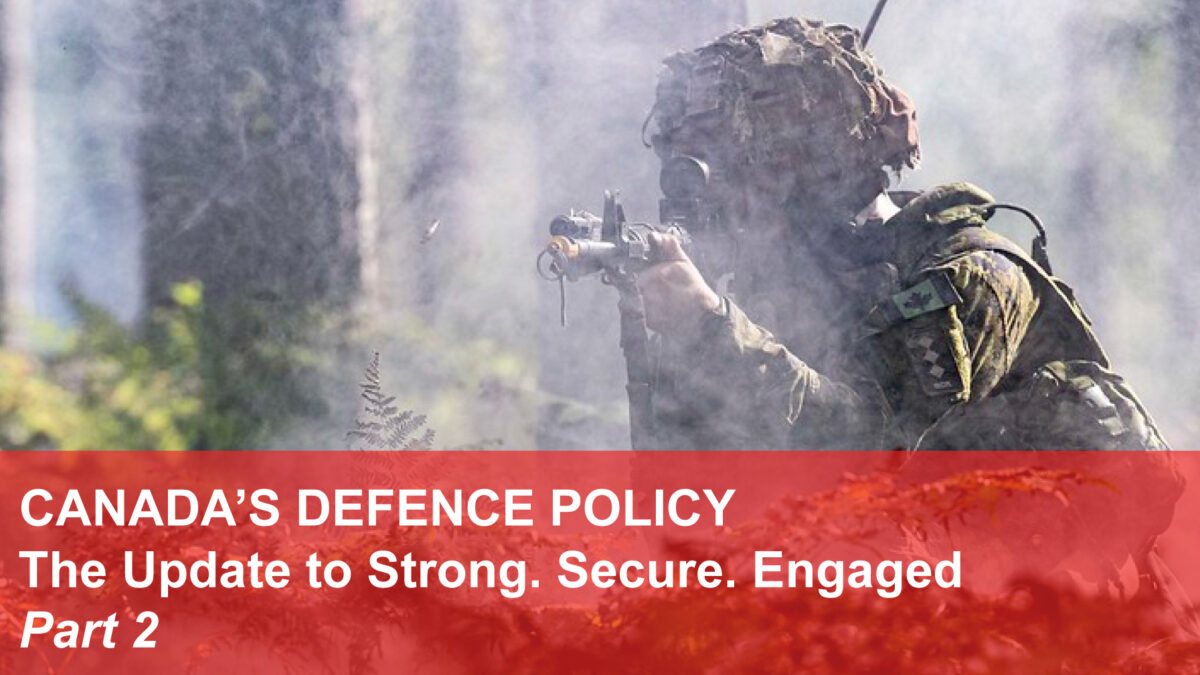“It’s about operational outcomes, Sir.”
Strategy guides. Capabilities contribute. Outcomes matter.
Policy is the guiding light for defence strategy, and strategy is the guiding light for capabilities.
But while capabilities and, often more specifically, requirements, are the typical subsequent guide for numbers and types of personnel and equipment, and depth and degree of force readiness, it is operational outcomes that matter.
Thinking about “outcomes” forces us to think beyond what Canada will have going into a fight, to what Canada needs out of a fight. An outcomes-based defence policy means thinking clearly about what return – in security and in support of Canada’s interests – Canadians can expect from their defence investment.
It isn’t always easy or feasible to think of outcomes vice capabilities or requirements. When it is possible, and mostly it is, thinking first of the required outcome provides a defensible signpost to the full spectrum of capabilities needed in the face of the likely threat.
In an operational theatre far, far away.
Deterring and containing conflict far from home and our primary areas of global economic and other interests is the defence outcome Canadians expect from their government.
Sovereignty clearly and unambiguously asserted, and control exercised over our vast waters, coastline, land and airspace – Arctic and continental – is the strategic outcome we expect here at home (noting that sailing to the Arctic from Halifax or Victoria is respectively akin to sailing to Europe or Japan).
Fight when you get there …
Abroad, this means that our men and women in uniform must be equipped, prepared, and supported to be operationally effective for long periods at great distance, in harm’s way.
At home, this means that nations or other actors considering unlawful entry into Canada’s areas of sovereignty and control understand that they are coming into harm’s way.
(To do any less is to only partially defend and, last anyone looked, it was not called the Department of Partial Defence.)
… And come back safely.
Canadians understand that conflict incurs casualties. Afghanistan showed, however, that Canadians do not tolerate casualties easily. They want their Armed Forces members to return home safely.
Thinking about outcomes (A soldier – or battalion of soldiers – returning safely is a clear outcome.) forces us to think about acceptable casualty rates. The acceptable outcome in turn drives the capabilities needed against the likely threat, beyond equipment capabilities to the sum of all the parts: people, kit, and readiness.
Don’t forget the glue.
Amid the basics of sea, land, and air force capability mixes stand out six capabilities without which Canada cannot achieve its strategic outcomes.
The first two are submarines and special forces. With their combination of stealth, operational flexibility, and potential and real lethality, submarines and special forces create strategic effect, shaping the operational theatre and influencing decision-makers well in advance of potential conflict.
History recommends adding a third and a fourth: long distance sea and air transport and logistics, and a strong domestic defence industrial base, including a munitions capability to support a prolonged emergency or conflict.
The fifth is missile defence over Canada. Put simply, it is time to “get over” our fear that recognizing the ballistic and/or long-range missile risk to Canada is to encourage proliferation. The caricature of an ostrich sticking its head in the sand is not an appropriate policy emblem.
The sixth is the least expensive … and the most institutionally ignored: the protective glue of communications, cyber, and systems interoperability without which defence outcomes of any sort are at risk, and the sum of the parts is much less than the whole.
_____________
Jake Jacobson has studied and served for more than five decades in defence: at sea and in major programs for the Navy, in industry in a variety of executive roles, and as an Assistant Deputy Minister Chief of Staff for the Materiel Group in the Department of National Defence.
_____________

